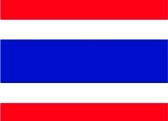All Categories
Big Pack - (500) Black Cherry Prunus serotina Tree Seeds - Berries Used in Wine Making - by MySeeds.Co (Big Pack - Black Cherry)
Share Tweet
*Price and Stocks may change without prior notice
*Packaging of actual item may differ from photo shown
- Electrical items MAY be 110 volts.
- 7 Day Return Policy
- All products are genuine and original








About Big Pack - (500) Black Cherry Prunus Serotina Tree
The Black Cherry is the largest Native American Cherry. Its beautiful fragrant flower show, attraction to songbirds and its fall color make it a highly desirable shade tree if you have the room. A favorite native american tree, the handsome Black Cherry has a straight trunk and an oblong crown and usually grows 40 to 60 feet high, but can sometimes get as high as 100 feet tall. The bark is light to dark gray, developing scaly fissures with age. The oval to lance shaped shiny dark green leaves are 2 to 6 inches long and arranged alternately. They end in a sharp point and have fine teeth along the margins. When crushed, the leaves smell like Black Cherry soda pop. Before dropping in autumn, the leaves turn lovely shades of yellow, orange or red, but this varies with weather conditions and among seedlings. The fragrant tiny white flowers are borne abundantly in elongated drooping clusters 4 to 6 inches long. They appear in early spring as the leaves are unfolding. In flower, the Black Cherry is very showy and always abuzz with delighted insects. The cherries are dark red, almost black, about 0.33 inches in diameter and ripen in early summer. The leaves and inner bark of Black Cherry contain a cyanide compound that smells like almonds and was formerly used in cough medicines and liniments. The cherries are edible, if somewhat bitter and are used for jelly and wine making and to flavor brandy. Brandy or rum flavored with Black Cherries is called "Cherry Bounce." The cherries are eaten by all manner of wildlife and are especially relished by songbirds. Deer and rabbits eat the seedlings and saplings, and where abundant, these herbivores may prevent any Cherry trees from growing up. The wood is reddish brown, close grained and very hard. It is used for furniture, veneer, tool handles and has few rivals as a fine cabinet wood.

















